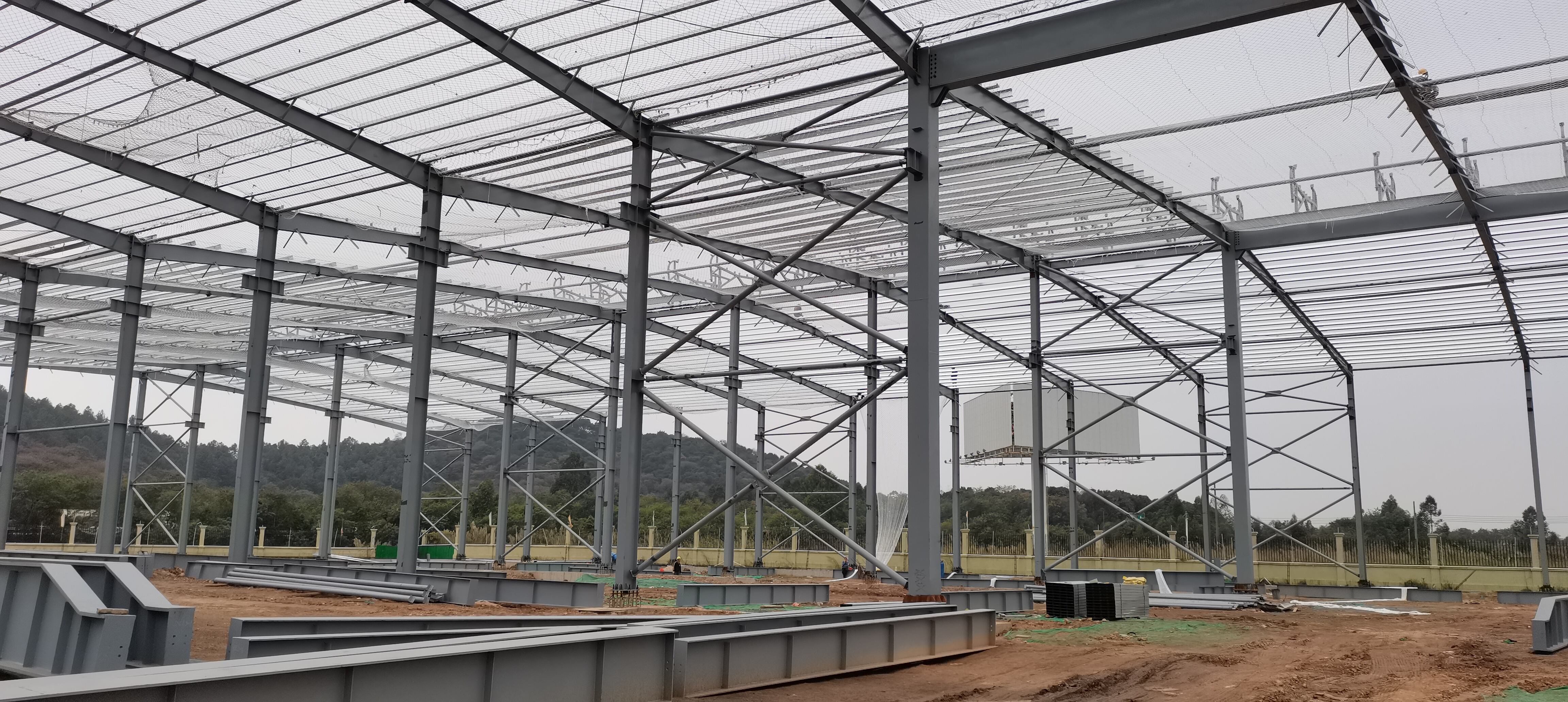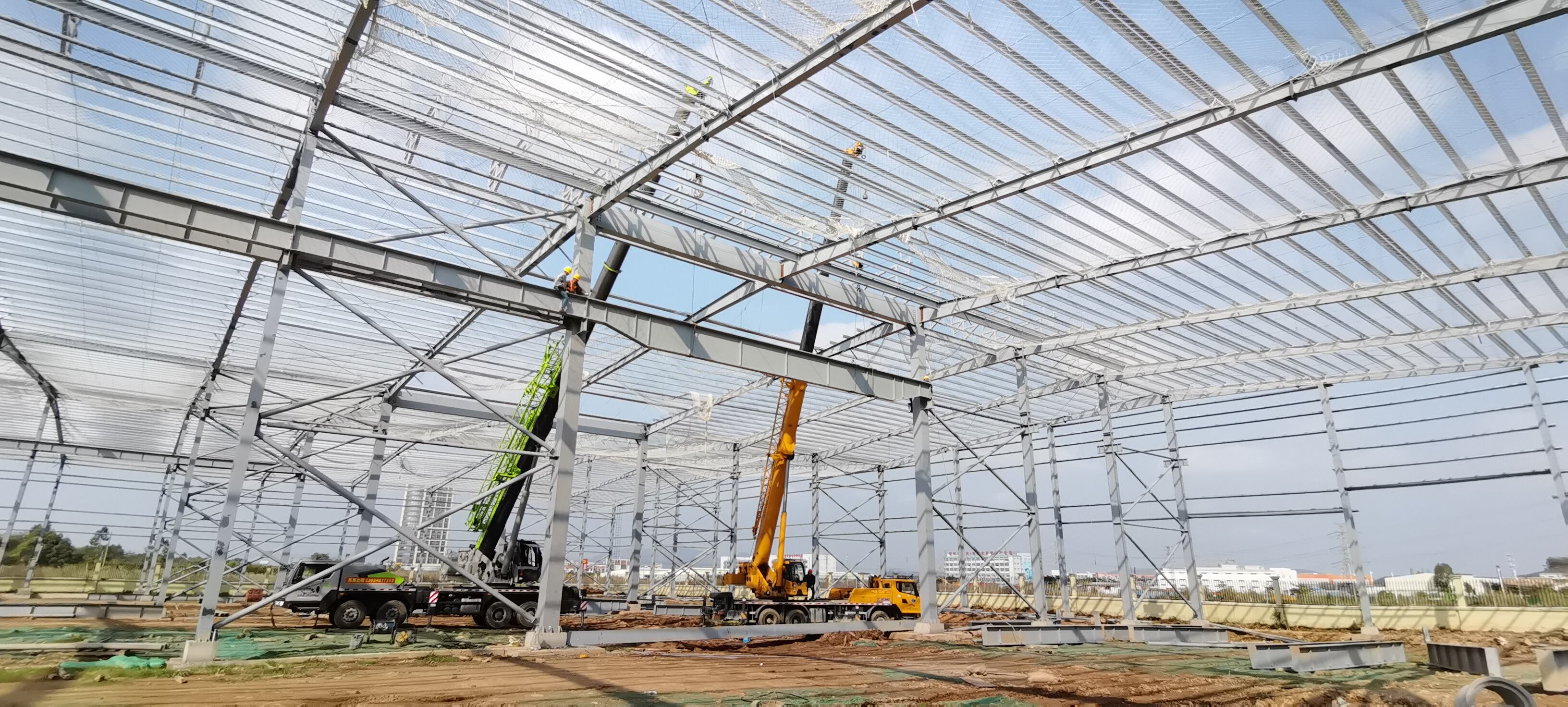
Steel structures for large span buildings by Guangdong Junyou Steel Structure Co., Ltd are engineering marvels, designed to create vast, column-free spaces that define iconic venues and functional industrial facilities. These structures utilize advanced steel systems—including trusses, arches, and space frames—to span 50m to 200m, eliminating internal supports and maximizing usable area. Truss systems ( Pratt, Warren, or bowstring) are ideal for spans 50-100m, using steel members arranged in triangular patterns to distribute loads efficiently, while arch structures (circular or parabolic) excel in 80-150m spans, leveraging their curved shape to resist compressive forces. For spans exceeding 150m, space frames—three-dimensional grids of steel tubes—provide exceptional rigidity and load distribution. Materials and fabrication ensure performance. High-strength steel (grades Q460 and Q690) with tensile strengths up to 700MPa is used for critical components, reducing material weight while maintaining strength. Connections—bolted, welded, or pinned—are engineered for flexibility or rigidity based on load requirements, with fatigue-resistant designs for dynamic loads (crowds, wind-induced vibration). Fabrication involves CNC cutting, robotic welding, and heat treatment to ensure dimensional accuracy and mechanical properties, with components undergoing ultrasonic and magnetic particle inspections to detect flaws. Applications span iconic and functional projects. Stadiums and arenas benefit from large span steel structures, creating unobstructed views for 50,000+ spectators, while airports use them for terminal roofs that span over gates and baggage claims. Industrial facilities—like aircraft hangars and shipyards—rely on these structures to accommodate large equipment and vehicles, with clear heights up to 30m. Convention centers and exhibition halls utilize the open spaces for flexible event layouts, enhancing versatility. Construction and durability are engineered for longevity. Prefabricated components are transported to site and assembled using cranes, with temporary supports used during erection until the structure is self-stable. The steel undergoes protective coatings (epoxy, polyurethane) to resist corrosion, ensuring a service life of 100+ years. For seismic zones, energy-dissipating devices are integrated to absorb earthquake forces, while wind tunnel testing optimizes aerodynamic shapes to reduce wind loads. These large span steel structures stand as a testament to human ingenuity, enabling spaces that inspire, function, and endure.
